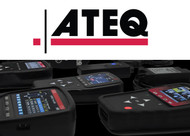TPMS Light On? Understand What It Means & What to Do
30th Mar 2024
When the TPMS warning light illuminates on your dashboard, it signals an issue with your tire pressure. This light is a critical alert. It indicates that your tire pressure may fall outside the safe operating range, potentially compromising your vehicle’s handling and safety.
Resolving the TPMS warning light with a TPMS reset tool is a common solution, though understanding the root cause is essential for proper maintenance. At times, the fault lies within the TPMS sensor. This crucial device within your tires keeps track of pressure levels and ensures your vehicle performs optimally and safely.
Knowing why your vehicle's TPMS warning light is on is crucial for maintaining tire safety and efficiency. In this blog, we'll explore how to accurately diagnose and resolve issues using a TPMS sensor tool. Let’s first learn more about TPMS sensor tool!
What Is TPMS Sensor?
The role of a TPMS sensor in monitoring tire pressure continuously is critical for vehicle safety. It continuously measures the pressure inside each tire, ensuring it stays within the designated safe range. When pressure drops or exceeds this range, it triggers the TPMS warning light on your dashboard, alerting you to potential tire issues.
To maintain accurate tire pressure readings and vehicle safety, a TPMS sensor tool is essential for diagnosing and rectifying sensor-related problems.
Why Is Your TPMS Warning Light On?
Understanding why your vehicle's TPMS warning light is on is crucial for maintaining its safety and efficiency. Here are five key reasons that could cause the light to activate:
1- Low Tire Pressure
Low tire pressure triggering the TPMS warning light requires immediate attention to ensure safe driving conditions. This is a clear signal to check and adjust your tire pressure for optimal performance and safety.
2- Faulty TPMS Sensor
Faulty TPMS sensors causing the warning light to illuminate highlight the need for timely diagnostics with a TPMS sensor tool.
3- Temperature Fluctuations
Significant temperature changes can affect tire pressure. Cold weather may cause the pressure to drop, turning on the TPMS warning light. Regular monitoring helps in maintaining the correct pressure.
4- System Reset Needed
After adjusting tire pressure or replacing a tire, you might need to use a tpms reset tool. This tool helps in recalibrating the system, ensuring the warning light reflects the current tire status accurately.
5- Sensor Battery Low
TPMS sensors are battery-powered, and a low battery may cause the system to malfunction, illuminating the warning light. Consider using a tpms sensor activator to check sensor health and replace batteries as needed.
What To Do About TPMS Warning Light?
Addressing a TPMS warning light promptly ensures your vehicle remains safe and efficient on the road. Here are five practical steps to diagnose and resolve common triggers of the TPMS warning light:
1- Check Tire Pressure
First, verify the pressure in each tire with a reliable gauge. If any tire falls below the recommended level, inflate it to the proper pressure. This simple step may turn off the TPMS warning light if low pressure was the cause.
2- Use a TPMS Reset Tool
If the TPMS warning light persists after adjusting the tire pressure, employ a TPMS reset tool. This device can recalibrate the system, ensuring it accurately reflects the current tire pressures.
3- Inspect TPMS Sensors
Periodic inspections of TPMS sensors with a TPMS sensor tool prevent false alarms and maintain system integrity. A faulty sensor can misread pressure levels, falsely triggering the TPMS warning light. A tpms sensor tool is invaluable for diagnosing and addressing sensor issues.
4- Address Temperature Changes
Seasonal temperature changes impacting tire pressure highlight the importance of regular checks to avoid TPMS warning light issues. This proactive measure maintains optimal tire performance and safety.
5- Replace Sensor Batteries
TPMS sensors are powered by batteries that can deplete over time. If a sensor's battery is low, it may fail to transmit accurate readings, causing the TPMS warning light to activate. Use a TPMS sensor activator to test each sensor's battery life and replace as necessary.
Shop ATEQ TPMS Tools At Discounted Price Now!
Find the best ATEQ TPMS tools for diagnosing and fixing the TPMS warning light at JB Tools, your trusted source for automotive maintenance equipment. Elevate your vehicle's tire maintenance with top-quality ATEQ products at discounted prices.
Shop now and ensure your ride's safety and performance with the trusted name in TPMS solutions, backed by the reliability of JB Tools




